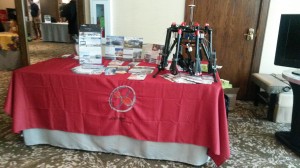I’ve previously written about the value of relationship-building to nonprofit organizations.
Organizations that thrive relentlessly focus on relationships. Successful organizations are constantly expanding their pool of relationships and strengthening existing relationships. Then they consciously activate those relationships.
I was recently talking to a nonprofit leader who seemed to grasp this in theory, but struggled with execution.
As such, I’ve repackaged in this article some of my prior writing about the value of relationships with the aims of providing more practical advice people can use when it comes to building relationships that matter for your organization.
But first, why relationships?
It comes down to human nature. While people receive information outside of relationships, relationships have a powerful role in how people react to information.
People listen more to people with whom they have a relationship.
People are more likely to be persuaded by people with whom they have a relationship.
People take action more when requested from people with whom they have a relationship.
Of course, the quality of the relationship matters too. The deeper the relationship, the greater the odds that we will listen to someone, be persuaded by them, or take action at their request. Conversely, a bad relationship makes someone even less likely to listen or act upon a request.
Here’s a practical example of how this may impact fundraising for a nonprofit. An Executive Director may give a pitch-perfect donation request to John Doe. A board member may give a mediocre donation request to the same John Doe. If the board member and John Doe are friends and the Executive Director has never met John Doe, the mediocre board request is far more likely to yield a significant donation.
Yet, it would be a mistake to think of relationships as just about fundraising. Relationships impact an organization’s interaction with volunteers, media, allied organizations, elected officials, and people the organizations are working to serve. Any time you’re trying to shape behavior, relationships matter.
So how do you go from theory to practice?
Here are seven ideas worth considering.
First, build into your workplans (especially Executive Directors) time set aside for relationship-building. If you don’t set aside time for it, you’re less likely to make it happen. Examples of relationship-building activities that take time:
- Attending fundraisers for peer organizations.
- Going to lunch or coffee with allies who you don’t know particularly well.
- Asking for advice from elected officials or other decision-makers.
- Attending conferences and focusing on relationships more than the conference substance.
Second, create events with relationship-building in mind. This could be:
- A volunteer appreciation event.
- A “Meet the Executive Director” or “someone else important” event.
- A workshop or training where time is set aside for people to get to know each other.
Every time you plan or attend an event, a standard question should be: “how can this event be used to meet someone new and/or strengthen my relationship with those I already know?”
Third, train your staff about the value of relationships and events. If they’re attending an event while working for you, they should understand they should be focused on new people and not just standing in the corner chatting with folks they already know well. Challenge them to come back from every event with a couple examples of new people they met with whom they should do some follow-up.
Fourth, set relationship goals. When I was an Executive Director, I had a goal of having lunch or coffee with one allied Executive Director per month with no agenda other than getting to know them (and their organization) better. By putting this goal in writing as part of my annual goals with the board, I “forced” myself to stay on track.
Fifth, use your organizational database to record what you learn. Even with the best intentions, it can be challenging to meet people and remember everything of relevance you learned six months or a year later. Your organization should have a CRM (constituent relationship management) database (probably primarily for fundraising, but for other things too) where you can keep track of who you met with of significance and add notes of anything significant you learned where you may wish to follow-up at your next meeting. Taking notes in your database doesn’t make your relationship any less authentic. It just recognizes we have fallible memories.
Sixth, seek out and bring into your organization those who’re obviously good at relationships. You and I know them. I’m a natural introvert. But we all know those extroverts who seem to know everyone and like playing a connecting role between people. They are golden for your nonprofit if you can excite them about your cause. If you see somebody who fits that bill express interest, put extra time and attention into cultivating them.
Lastly, be committed to asking those with whom you’re in a relationship to activate their relationships on your behalf. As I write this, I have 1,345 LinkedIn Connections. Those 1,345 have more than 477,000 unique connections! Of course, LinkedIn is just being used as an illustration of a point: the people with whom any individual has relationships open them up to a vastly larger network of relationships than they can ever tap on their own.
So don’t just rely upon this “activation” of relationships to happen by chance. Directly ask your supporters to reach out to their friends and neighbors. This could be as part of a Peer to Peer fundraising effort, as part of volunteer recruitment, recruiting people to attend events, sharing online news, or some other method. Bottom line: turn donors into fundraisers and volunteers into volunteer recruiters.
Do you have other ideas for how to build and strengthen relationships? I’d love to hear in your comments.





